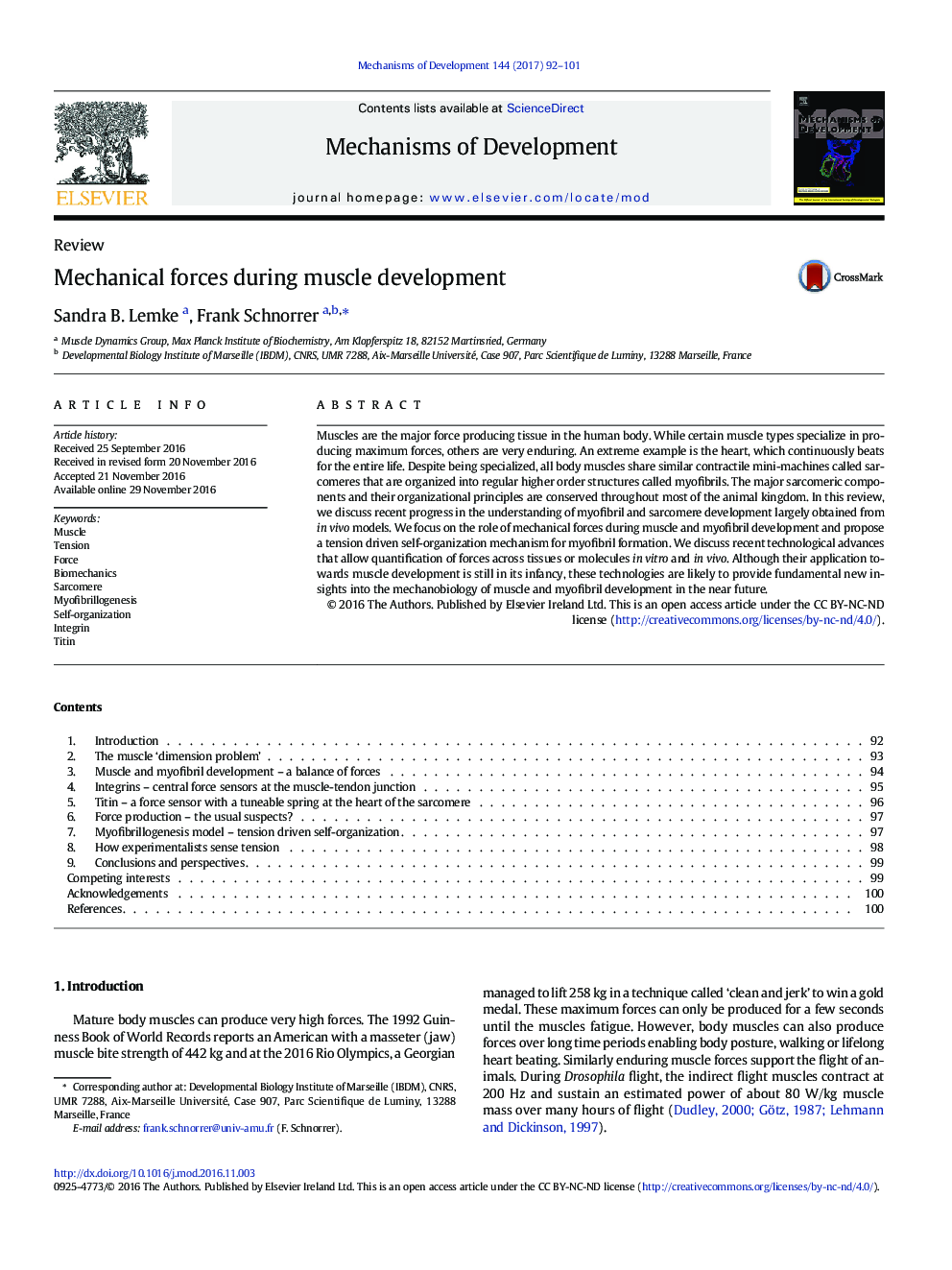| Article ID | Journal | Published Year | Pages | File Type |
|---|---|---|---|---|
| 5533974 | Mechanisms of Development | 2017 | 10 Pages |
â¢We discuss the mechanisms of myofibril and sarcomere development.â¢We detail the role of mechanical forces for myofibril and sarcomere formation.â¢We propose a tension driven self-organisation model of myofibril formation.â¢We discuss technologies to quantify forces in tissues or across molecules.
Muscles are the major force producing tissue in the human body. While certain muscle types specialize in producing maximum forces, others are very enduring. An extreme example is the heart, which continuously beats for the entire life. Despite being specialized, all body muscles share similar contractile mini-machines called sarcomeres that are organized into regular higher order structures called myofibrils. The major sarcomeric components and their organizational principles are conserved throughout most of the animal kingdom. In this review, we discuss recent progress in the understanding of myofibril and sarcomere development largely obtained from in vivo models. We focus on the role of mechanical forces during muscle and myofibril development and propose a tension driven self-organization mechanism for myofibril formation. We discuss recent technological advances that allow quantification of forces across tissues or molecules in vitro and in vivo. Although their application towards muscle development is still in its infancy, these technologies are likely to provide fundamental new insights into the mechanobiology of muscle and myofibril development in the near future.
